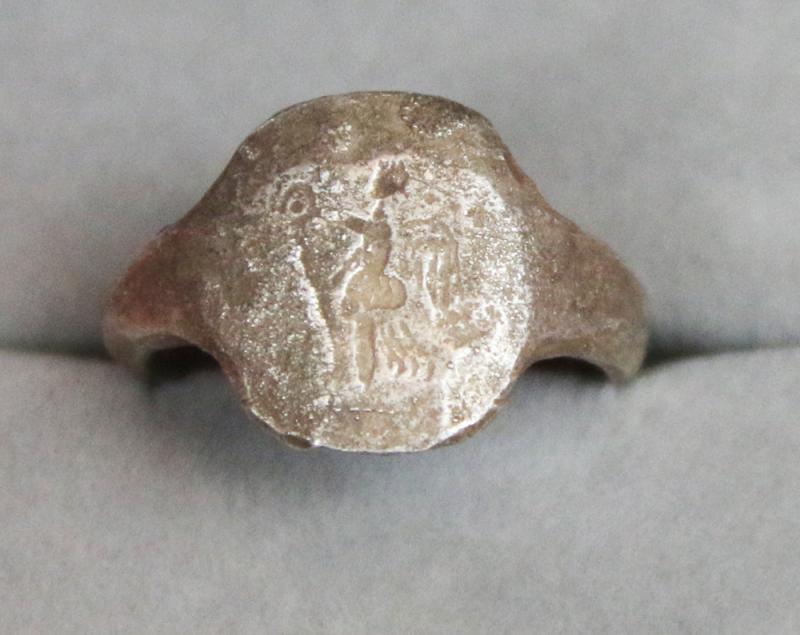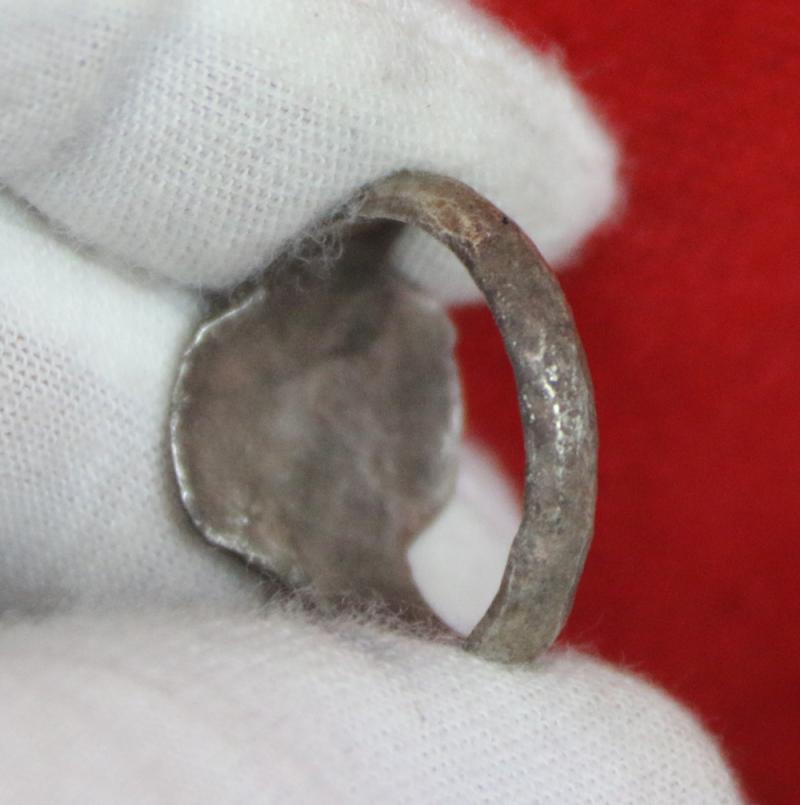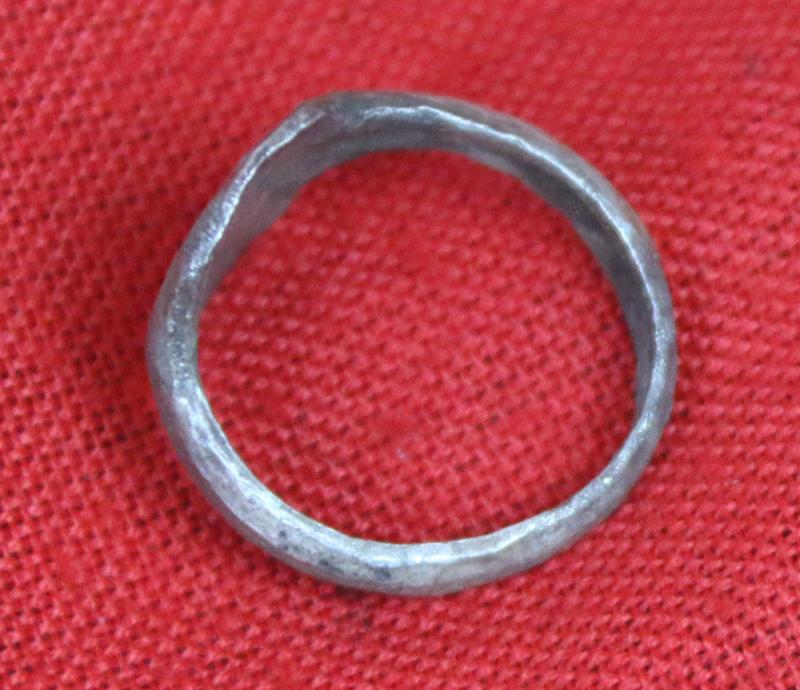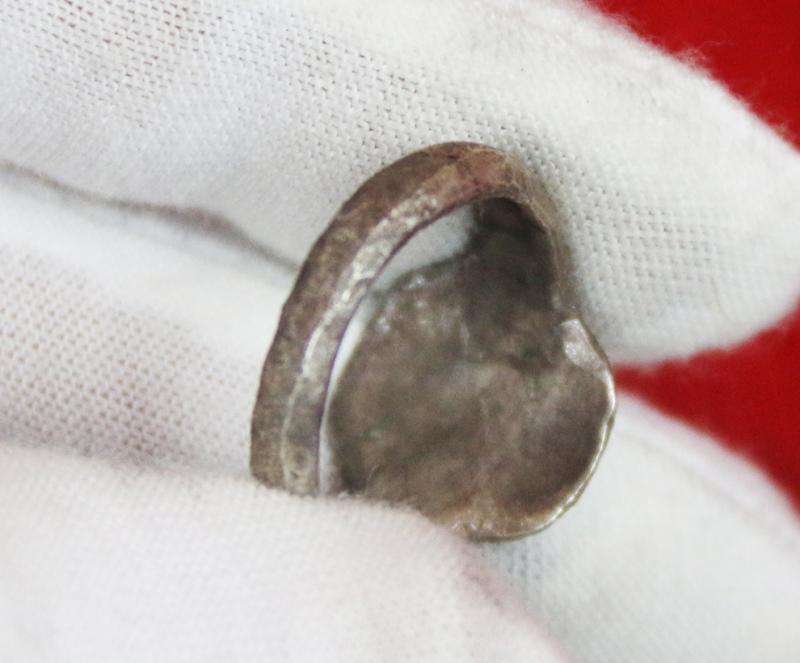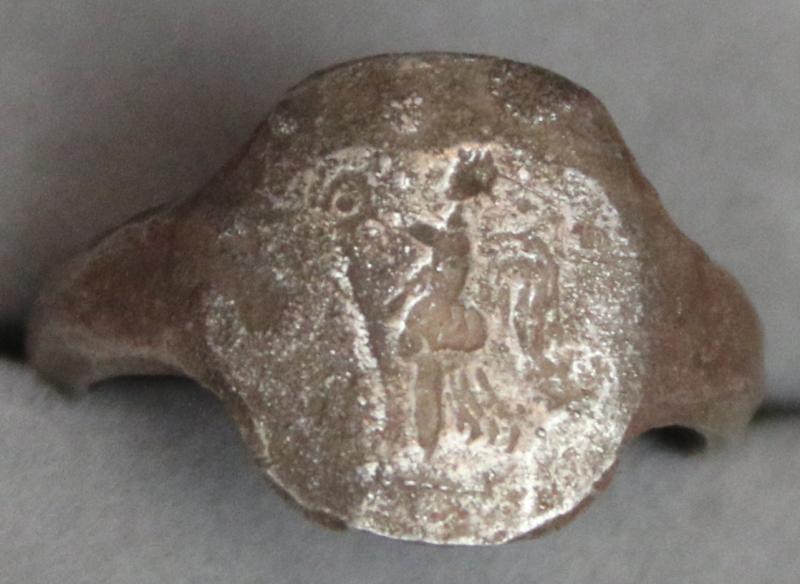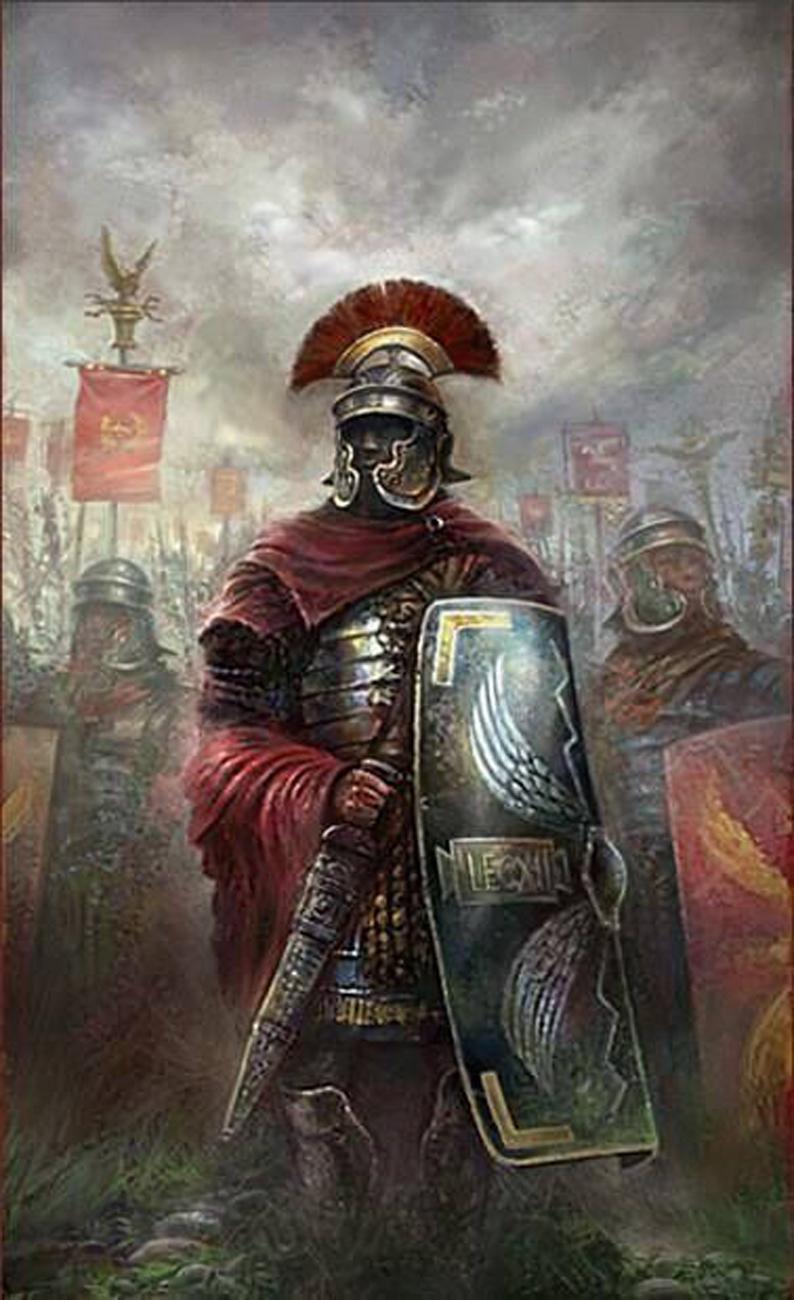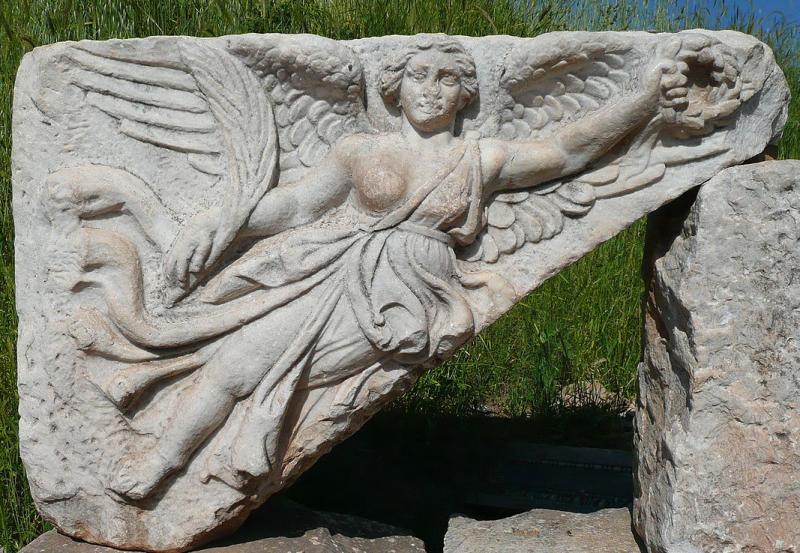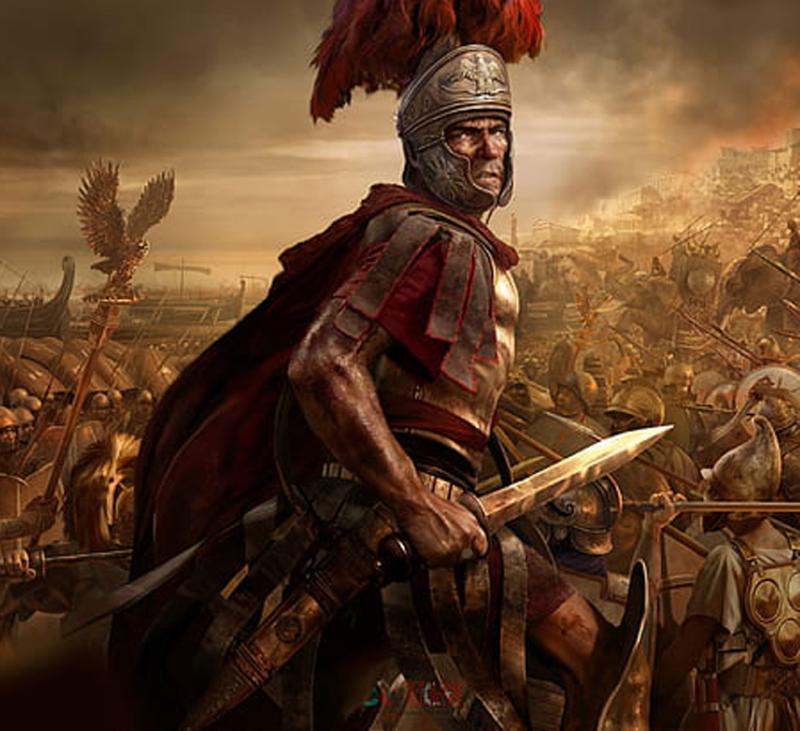An Original, Rare Incredible & Historical Piece. Silver Imperial Roman Centurion or Tribune's Military Ring of Victory, 2nd Century AD Engraved with the Intaglio of Winged Victory, wearing her helmet and holding the laurel wreath of Victory
The rings surface shows combat service wear, yet has survived remarkably well considering it is near 2000 years old.
The laurel wreath was worn symbolically by the Imperial Roman Emperors. Military Roman bronze rings were allowed to be worn by the Legionary or Centurion, but silver grade was only for the ranks of such as the Centurion, Tribune or Legate.
Victoria, in Roman religion, personification of victory, the equivalent of the Greek goddess Nike. She was often associated with Jupiter, Mars, and other deities and was especially worshipped by the army. In later times she had three or four sanctuaries at Rome, including a temple on the Palatine Hill and an altar in the Senate House.
After the Marian reforms of 107 BC (subsequently further formalised by the emperor Claudius) created a professionalised military system, legions were commanded by a legionary legate (legatus). Six tribunes were still posted to a legion, but their duties and responsibilities had changed, becoming more a political position than a military rank. The second-in-command to the legate was the tribunus laticlavius or 'broad-stripe' tribune (named after the width of the stripe used to demarcate him on his tunic and toga),6 usually a young man of senatorial rank. He was given this position to learn and watch the actions of the legate. They often found themselves leading their unit in the absence of a legate, and some legions were permanently commanded by a broad-stripe tribune, such as those stationed in Egypt, as an Augustan law required that no member of the Senatorial Order ever enter Egypt.
A Centurion was a position in the Roman army during classical antiquity, nominally the commander of a century, a military unit originally consisting of 100 legionaries. The size of the century changed over time, and from the first century BC through most of the imperial era was reduced to 80 men.
In a Roman legion, centuries were grouped into cohorts and commanded by their senior-most centurion. The prestigious first cohort was led by the primus pilus, the most senior centurion in the legion and its fourth-in-command who was next in line for promotion to Praefectus Castrorum, and the primi ordines who were the centurions of the first cohort.
This fine ring was worn by higher ranked military officer's from the era of Emperor Marcus Aurelius, 161 to 180 ad, the last part of his reign was dramatically represented in the blockbuster film 'Gladiator', starring Richard Harris as the Emperor. He acceded to the throne of Emperor alongside his adoptive brother, who reigned under the name Lucius Verus. Under his rule the Roman Empire witnessed heavy military conflict. In the East, the Romans fought successfully with a revitalised Parthian Empire and the rebel Kingdom of Armenia. Marcus defeated the Marcomanni, Quadi, and Sarmatian Iazyges in the Marcomannic Wars; however, these and other Germanic peoples began to represent a troubling reality for the Empire.
Commodus. the successor and son of Marcus Aurelias, was the Roman emperor who ruled from 177 to 192. He served jointly with his father Marcus Aurelius from 177 until the latter's death in 180, and thereafter he reigned alone until his assassination. His reign is commonly thought of as marking the end of a golden period of peace in the history of the Roman Empire, known as the Pax Romana.
Commodus became the youngest emperor and consul up to that point, at the age of 16. Throughout his reign, Commodus entrusted the management of affairs to his palace chamberlain and praetorian prefects, named Saoterus, Perennis and Cleander.
Commodus's assassination in 192, by a wrestler in the bath, marked the end of the Nerva–Antonine dynasty. He was succeeded by Pertinax, the first emperor in the tumultuous Year of the Five Emperors.
Every single item from The Lanes Armoury is accompanied by our unique Certificate of Authenticity. Part of our continued dedication to maintain the standards forged by us over the past 100 years of trading
Code: 24629
945.00 GBP


